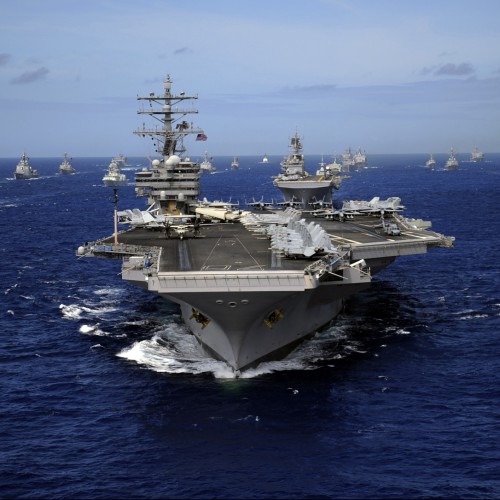
The U.S. Navy and the Department of Defense have agreed to begin shock testing on the USS Gerald Ford, the Navy’s new $12.9 billion carrier that is costliest ship of war ever built. The carrier went to sea for the first time in April of 2017 and is currently expected to go on active duty in 2022.
The Pentagon initially wanted to delay the shock test for six years until it could have a second copy of the new carrier (the USS John Kennedy) built. The U.S. Senate Armed Services Committee pressed the Navy to begin the test as originally planned.
The Ford was built by Huntington Ingalls Industries Inc. (NYSE: HII) in Newport News, Virginia. It is the first of four Ford-class carriers the company will build at an acquisition cost of $55 billion.
A shock test involves detonating underwater blasts near the ship to test its ability to withstand the shocks. The test is not intended to harm the ship or the crew that is on board at the time of testing.
According to Bloomberg, Deputy Defense Secretary Patrick Shanahan responded in a letter to pressure from Senators John McCain and Jack Reed to go ahead as planned instead of delaying the test: “We agree with your view that a test in normal sequence is more prudent and pragmatic.”
The U.S. carrier fleet is comprised of 11 nuclear-powered ships, 10 of which are the older Nimitz-class carriers that entered service in 1975. The number of ships in the carrier fleet is established in statute, which means that unless the law is changed a total of 11 Ford-class carriers ultimately will replace the existing 10 Nimitz class ships as the new carriers.
Take This Retirement Quiz To Get Matched With A Financial Advisor (Sponsored)
Take the quiz below to get matched with a financial advisor today.
Each advisor has been vetted by SmartAsset and is held to a fiduciary standard to act in your best interests.
Here’s how it works:
1. Answer SmartAsset advisor match quiz
2. Review your pre-screened matches at your leisure. Check out the
advisors’ profiles.
3. Speak with advisors at no cost to you. Have an introductory call on the phone or introduction in person and choose whom to work with in the future
Take the retirement quiz right here.
Thank you for reading! Have some feedback for us?
Contact the 24/7 Wall St. editorial team.